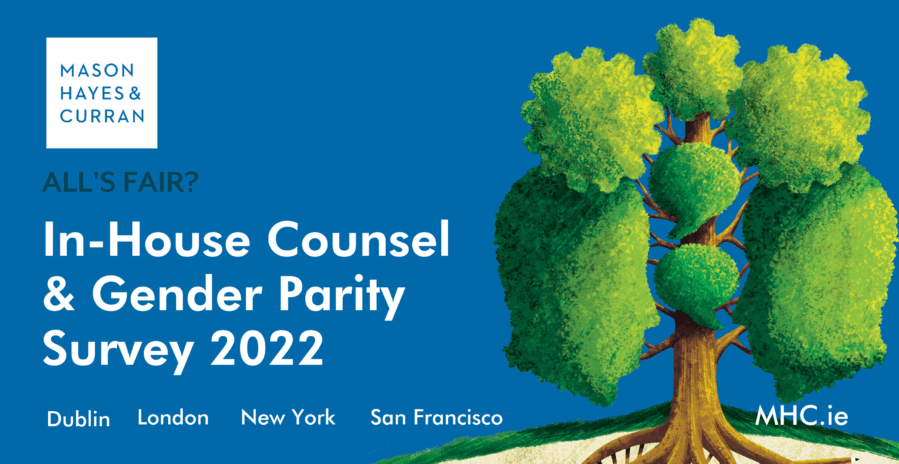In-House Counsel and Gender Parity Survey 2022

This is the fifth year we have conducted an In-house Counsel and Gender Parity Survey. In previous years, our research showed female in-house lawyers grappling with the challenges of balancing work and home, while being under-represented at senior levels in their organisations.
This year, these trends have continued. Worryingly, in some areas, we appear to be going backwards. The reported number of women in senior leadership positions in Ireland has declined in recent years, and it is notable that the figures being reported indicate that we have returned to 2019 research levels.
Commenting on the results, Vanessa Byrne, Partner, Mason Hayes & Curran, said:
“It is concerning that the trend when it comes to the advancement of females in the workplace in Ireland is going in the wrong direction. Not only has there been a stagnation in achieving gender parity at senior leadership level, but it appears that the gender leadership gap may actually be getting wider. It is notable that many of the figures being reported have returned to our 2019 pre-Covid research levels.
For non-executive boards the performance seems to have improved very slightly with those having over 50% female members increasing from 3% to 6%, and those having no females declining from 11% to 8%. However, the pace of change still seems to be frustratingly slow.
We have seen increasing legislation and formal measures to increase female representation at board level. Respondents were extremely positive on the upcoming EU “Women on Boards” Directive, with 79% agreeing that it was the right approach. Greater transparency, measures to improve work-life balance, and indeed quotas are all measures which should be deployed in the battle against workplace gender inequality.”
The survey highlights that pay transparency remains an issue, with strong perceptions among respondents around pay inequality and the expectation that Gender Pay Gap reporting will find a discrepancy between male and female pay.
Elizabeth Ryan, Partner, Mason Hayes & Curran said:
“The long-awaited Gender Pay Gap Information Act commenced on 31 May 2022 and we saw a further significant development this summer, when the Government published the Gender Pay Gap Information Regulations. Organisations with more than 250 employees will be reporting on their gender pay gaps for the first time this December. These reports should be a useful tool to shine a light on where gender pay gaps exist, the reasons underpinning such gaps and to encourage organisations to formulate a plan around narrowing the gap.
In terms of causes for the gender pay gap, the lack of women in senior levels is perceived to be the driving reason with 61% of respondents giving it their number one. Caring responsibilities was second at 17% and unpaid leave by women came in third at 15%.
To try and address the pay gap, greater internal pay transparency ranked first at 27% as the single most effective measure. This was followed by government legislation at 19% and companies pledging to have more women in senior roles at 11%. It is interesting to note that although lack of women in senior roles was the driving cause for gender pay gap it ranked third as a potential solution, perhaps indicating that people feel that organisations are not the key drivers of change.”
Along with Gender Pay Gap reporting, there have been significant recent developments such as the EU “Women on Boards” Directive and the EU Work-Life Balance Directive. We are seeing strong support for these measures, which could help drive the institutional and cultural change needed to address structural disadvantages and make gender parity a reality in Ireland.

Read more about the survey findings in the Law Society of Ireland Gazette and Irish Legal News.
Share this:

